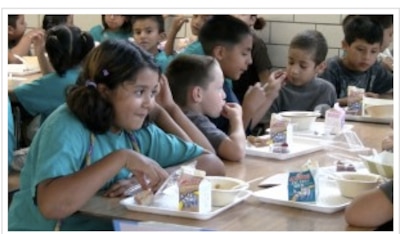Shoot for the moon The Shoot for the Moon Challenge extends International Walk to School Day by calling for thousands of Boulder Valley elementary students to keep walking and biking following the Oct. 6 Walk to School Day event. The BVSD School Food Project is rewarding students who go the distance during the week of Oct. 6-13 with a free breakfast on the morning of Oct. 13. The district’s target is for BVSD to literally travel the 238,857 miles to the moon by accumulating biking and walking distance over the week. For more information, visit this website.
Chefs move to schools Read this Washington Post story about the first big push of a new White House initiative aimed at getting students to eat healthier food with fun incentives. “The third-graders at Chicago’s McAuliffe Elementary School were a tough crowd. They liked the story of “Little Pea,” the twisted tale of a good little vegetable who tries valiantly to eat all his candy before having spinach for dessert. But when it came to actually tasting vegetables themselves, the students, each wearing a paper toque, were resistant. Chef Melissa Graham circulated, encouraging them to try just one bite – and not to spit it out. In the end, there were converts, even fans, of radishes and bell peppers. Cauliflower? Not so much. It was the same story at 67 public schools across Chicago last week. Chefs arrived with a story, some snacks and a message about healthful eating. The day was the first coordinated push of Chefs Move to Schools, the White House initiative that aims to create a volunteer chef corps to educate kids about food and nutrition.”

National School Lunch Week What? You didn’t know it was National School Lunch Week? Consider yourself informed. National School Lunch Week is indeed underway this week. Read more in this USDA blog post. “It’s an annual event, of course, but this year I think we have a lot to celebrate because more and more people are coming to understand how important it is to provide America’s school children with a healthy nutrition environment at school. In fact, as I look around, I see encouraging developments in many areas, but none more so than the growing number of schools that have decided to take on USDA’s HealthierUS School Challenge. Schools participating in the Challenge agree to create a healthy school environment by providing nutrition education, nutritious food and beverage choices, physical education and opportunities for physical activity. What I think is particularly impressive about the Challenge is that it’s completely voluntary. Schools taking on the Challenge do so because they recognize the vital role schools have to play in helping our nation’s children develop healthy nutrition habits. This fact is driven home when you consider that many children from low-income households eat as many as two meals each day at school.”
Mark Bishop, deputy director of the Healthy Schools Campaign, pointed out that last Friday, President Obama issued a proclamation stating that he is committed to making sure that the National School Lunch Program serves “meals that will contribute to the health and well-being of a new generation.” Read Bishop’s take on the politics of school nutrition.
School cafeterias to try psychology in lunch line 7News reports on what the feds are up to now in terms of healthy school food mind games. “Federal officials are turning to psychology in a new approach to get kids to choose healthier foods in the school lunch line. The U.S. Department of Agriculture is giving $2 million to food behavior scientists to use marketing tricks to encourage kids to pick fruits and veggies over cookies and french fries. Some of the ideas include hiding chocolate milk behind plain milk, putting the salad bar near checkout, placing fruit in pretty baskets and accepting only cash as payment for desserts. Studies by Cornell University researchers have found these tactics work, and Cornell will start a new child nutrition center to test more of these methods. Locally, 7NEWS has helped Aurora Public Schools launch the Go, Slow, Whoa (GSW) program in more than a half dozen elementary schools. LiveWell Colorado, a nonprofit focused on reducing obesity by promoting healthy eating and active living, has provided the funding for the program.”
Guidelines targeting childhood obesity Avoiding childhood obesity is as simple as 5-2-1-0, according to Health TeamWorks. The nonprofit healthcare collaborative recently unveiled guidelines intended to improve health and wellness for at-risk children. Using several evidence-based studies, Health TeamWorks recommends five servings of fruits and vegetables a day, two hours or less of TV, one hour or more of physical activity and zero sweetened beverages. Health TeamWorks is promoting the guidelines through health care professionals in Colorado.
About our First Person series:
First Person is where Chalkbeat features personal essays by educators, students, parents, and others trying to improve public education. Read our submission guidelines here.
